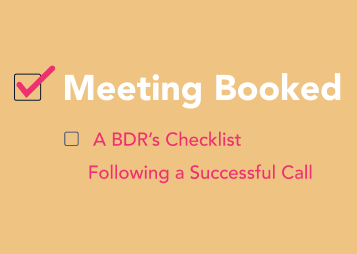In the world of sales, having a clear understanding of your ideal customers is absolutely crucial to success.
What is an ideal customer profile (ICP) ?
An Ideal Customer Profile (ICP) allows sales teams to identify, target, and close deals with their perfect customers. The exercise of defining and educating your internal sales and marketing teams about your ICP is worth its weight in gold, both for early-stage and established businesses.

In this guide, we’ll cover everything you need to know about creating, implementing, and benefiting from an effective ICP. By the end, you’ll understand what an ICP is, why it’s important, how to build one, and how to leverage it within your sales process.
Let’s dive in!
What is an ICP in sales?
An Ideal Customer Profile (ICP) is a detailed description of your perfect customer. In B2B sales, it includes firmographic (AKA company-related) data such as company size, industry, location, information on the process and tools they use and their financial data. But it also incorporates behavioral data such as buying needs, motivations, challenges, and goals.
Here’s an example of what an ICP may include:
- Company Size: Mid-market with 100-1000 employees
- Industry: Software/SaaS
- Geographic location: USA
- Revenue: $10M - $50M
- Buying Role: Director/Head of Sales Ops
- Pain Points: Manual sales processes, lack of CRM insights
- Goals: Increase sales efficiency, understand customer lifecycle
This profile allows you to visualize and understand your ideal customers. It acts as a guide for your sales and marketing teams to identify accounts that closely match the ICP criteria.
While it might be tempting to have multiple ICPs, the same way you might have multiple buyer personas, the power of the ICP is in its clarity and uniqueness. This is not an exercise to define your Total Addressable Market (TAM). The difference and impact you will see from working with a single ICP compared to multiple ICPs is unrivalled.

What is an ICP score?
An ICP score, or Ideal Customer Profile score, is a metric used to evaluate how well a potential customer matches a company's ideal buyer profile.
This score is calculated based on factors like industry, company size, and customer behavior, helping businesses prioritize leads that are more likely to convert. By using an ICP score, companies can focus their marketing and sales efforts on high-quality prospects.
Why are ICPs important?
Now, you might be wondering why bother with ICPs when you can just throw your product out there and see who bites.
But ICPs are incredibly valuable, especially for SaaS companies. Here are some of the top reasons why:
#1 ICPs focus your efforts
With a defined ICP, you can focus your messaging, campaigns, and sales outreach on your best-fit accounts. This allows you to use resources more efficiently.
#2 ICP strategy qualifies leads faster
By comparing leads against your ICP, you can quickly gauge fit and only progress qualified accounts through the funnel.
#3 Personalize marketing with ICP information
An ICP allows you to craft targeted messaging and campaigns that resonate with your ideal customers.
#4 ICP strategy means more informed sales operations
With knowledge of pain points, goals, and motivations from the ICP, sales teams can have more effective conversations.
#5 ICP information helps identify upsell opportunities
Understanding target customers also helps reveal cross-sell and upsell opportunities within that same customer base.
#6 Measure success with ICP benchmarks
Having an ICP provides a benchmark for marketing and sales to measure their success in engaging target accounts.
Hopefully, it’s becoming clear that ICPs are vital for any strategic, data-driven company looking to boost sales efficiency and performance. Getting really good at finding, winning and serving your ICP will allow you to grow sustainably.
The difference between sales ICPs and buyer personas
ICPs focus on the characteristics of the companies you're targeting. You're interested in what industry they're in, their size, location, and specific challenges.
An example ICP would be:
Mid-market B2B company
- In the software industry
- $10M-$50M in revenue
- Based in the US.
Buyer personas dive deeper into the people within the companies. You're getting to know the decision-makers themselves, as humans – their roles, pain points, goals, and personal preferences.
The example persona would be:
John Smith
- Head of Sales Operations (at said company)
- Based in Chicago.
- Age 45.

How to create a sales ICP to boost revenue in three phases
If you’re sold on the value of Ideal Customer Profiles, here is a step-by-step process for creating one for your business:
Phase 1: Research your existing business customers
Analyze current customer accounts and identify common attributes of your best customers. Who are your happiest customers, and what do they have in common? Look for patterns in industry, size, revenue, growth potential etc.
Speak with customer-facing teams including sales, support and account management - those on the front lines are best placed to offer valuable information and speak your ICP’s language.
Listening back to call recordings can also help you harness this information. This phase is all about gathering insights into the needs, thoughts, challenges and goals of your best customers, to begin to model your ICP.
Lastly, consider who are your dream clients, that you would love to work with. Question why you believe them to be such a good fit and map similar characteristics onto your ICP.
Phase 2: Determine criteria that makes a successful, satisfied (and ideal) customer
Now you can define the criteria that make an account your ideal customer. Develop firmographic and behavioral aspects that new accounts should match:
- Company size
- Industry
- Challenges
- Goals
- Any other relevant information.
Bonus points in this phase if you can also recognize your ICP’s catalyst - the thing that happens that prompts them to realize their problem is urgent and needs solving. This tipping point of action will be critical for you to know when your ICP is in the market to buy. The catalyst is sometimes referred to as the customers “pain point” or use case.
Phase 3: Confirm & trial your target ICP with sales & marketing activity
Validate the ICP with customer-facing teams. Get their feedback to improve accuracy. No doubt this will evolve over time, but get as close as you can on this.
Finalize the ideal customer profile and share across the business. This is not a document that should gather metaphorical dust in a Google Drive somewhere. This should be known and reflected on regularly by every team in the business. But above all, clearly outline how your ICP should be used to inform sales and marketing activities.
Executed effectively, this process will produce an ICP that acts as a powerful sales tool for your organization.
Setup a marketing campaign, or collaborate with sales to get them to incorporate the ICP data within their approach to validate it. Gather learnings from an initial trial and evaluate the outcomes
Testing and refining your ICP
Like any model, an Ideal Customer Profile will not be perfect right away. You need to test it, gather feedback, and refine it over time.
Implementing a conversation intelligence software will help you to gather insights into what customers are looking for and what triggers them to engage and purchase. Use AI tools like this to help inform your customer profiling process.
Here are some tips for testing and improving your ICP:
- Track sales outcomes for accounts that match your ICP vs those that don’t. Look for correlations between ICP fit and won/lost deals.
- Modify criteria if needed based on real sales data. For example, expand target industries if success is found outside the initial ones identified.
- Survey sales reps on which accounts tend to convert better. See if their perspectives align with ICP definitions.
- Conduct QBRs with current customers. As needs evolve, update your ICP to reflect new buyer behaviors and attributes.
- A/B test messaging on different segments within your ICP to see which ones convert best and uncover how well you really understand your ICP and their language.
- Remain flexible and with a finger on the pulse of industry changes. The world moves quickly these days and industries can change drastically in an instant, so be ready to respond, without panicking.
By continuously reviewing and optimizing your ICP, it will become more effective and aligned to your ideal customers. Like a fine wine, ICPs get better with age.
The benefits of having an ICP
We’ve already covered some major benefits of creating an ICP, but there really are so many advantages to outlining and internally sharing your ICP:
- More focused marketing - targeted campaigns, messaging, and content for ideal buyer accounts
- Better qualified leads - filtering out unqualified accounts earlier in the funnel to save team and time resources
- Improved conversions - higher win rates by only focusing on accounts that are likely to convert into long-term, sustainable customers
- More upsells - understanding of existing customers allows for targeted cross-sell and upsell motions
- Account intelligence - data-driven insights about ideal customers help inform sales conversations
- Better alignment - sales and marketing teams' activities are in sync, streamlining processes
- Customer satisfaction - better-suited customers make for happier customers and lower churn rates
It’s clear that ICPs can have an enormously positive impact on sales, marketing, and overall company growth.

The disadvantages of ICPs
No strategy is perfect, and ICPs are no exception. While the upsides heavily outweigh the downsides, here are a few potential disadvantages to keep in mind:
Risk of overlooking opportunities: by narrowing your focus, you might miss out on unexpected opportunities outside your ICP, so ensure your sales team is always open to a conversation.
Complexity requires time: creating and managing ICPs can be time-consuming and requires ongoing effort (although we’d argue that you get out what you put in, and then some!).
Less experimentation with new markets - strict ICP adherence may restrict exploration of untested but potentially lucrative customer segments.
Stifled creativity - relying too much on data limits the human insights that can identify uncommon but rewarding sales opportunities, messaging and channels.
Like any strategy, utilizing your ICP requires flexibility and nuance, so as a sales and marketing leader just be aware of these areas.
How to action your ICP
Alright, you've got your shiny new ICP – now what?
#1 Align your teams: make sure every department is on the same page regarding your ICP - everyone should know who you're targeting. Train client-facing staff on how to use the ICP, ensuring everyone understands its value and applications.
#2 Lead scoring: your ICP and lead scoring go hand in hand. Assign scores to leads based on how closely they match your ICP - the higher the score, the more attention they deserve.
#3 Marketing campaigns: craft marketing messages that resonate with your ICP. Use their pain points and goals as the foundation of your content.
#4 Sales outreach: train your sales team to identify ICP companies and prioritize them in their outreach efforts.
#5 Track adoption: monitor usage across departments including marketing campaign targeting, sales outreach cadences, and lead scoring.
#6 Refine regularly: continuously gather feedback, analyze data, and update the ICP to increase its effectiveness over time.
With the proper implementation and buy-in across the organization, an ICP can transform sales efficiency and bottom-line revenue. Any activity that is undertaken should ultimately pass the test of ‘does this align with our ICP?’.
In conclusion…
ICPs are an incredibly powerful sales tool when implemented effectively. They help B2B companies target the right accounts with the right messaging to boost conversions.
While ICPs require continuous refinement, they enable sales teams to engage their ideal customers with personalized and impactful interactions.
Hopefully this overview provides a framework for you to develop ICPs that drive results. Just remember to keep it updated and to view it as a helpful guide rather than absolute law. With an optimized ICP in place, your sales teams will be well-equipped to identify and close your perfect-fit accounts.
ICP and voice of customer: the game-changer
By harnessing your voice of customer through sales call recordings, you can get clarity on not only whether a business fits your ICP, but why - further informing and enriching your understanding of your ICP.
With this richer knowledge of the world from their perspective, their use cases and challenges, you can make informed strategic decisions about product development, business strategy and communications.
Shelley Lavery is the COO and Co-Founder of Jiminny, the leading conversation intelligence and sales coaching platform that helps companies maximize their revenue. With over a decade of experience in coaching B2B sales teams, Shelley was previously Group SVP of Sales at Reward Gateway now leading the conversation intelligence discussion with expertise and insight.




